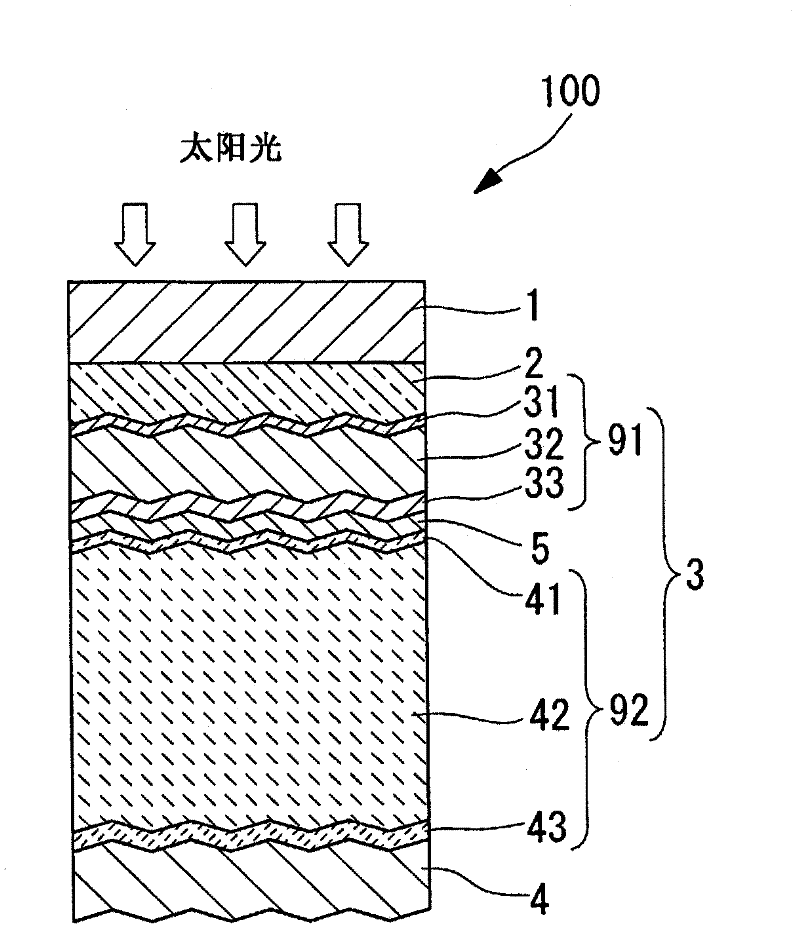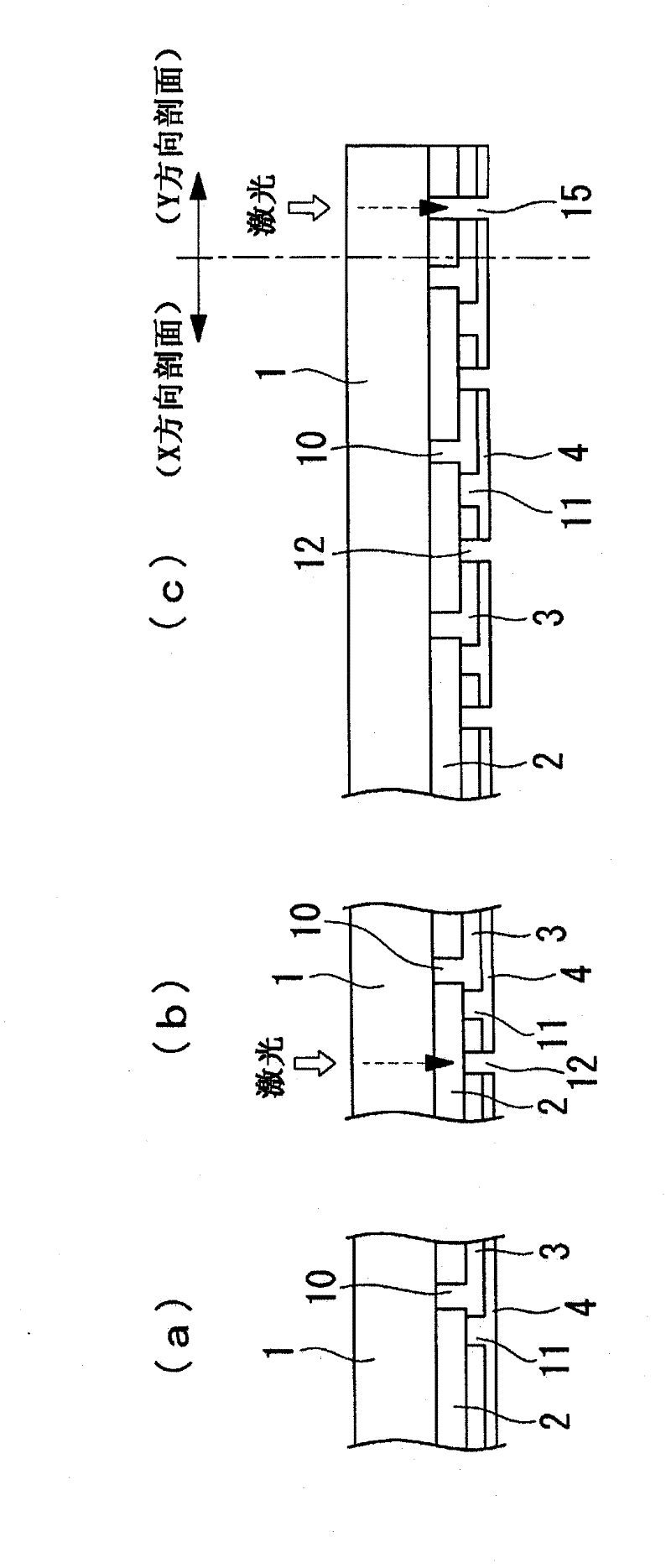Photoelectric conversion device
A technology for photoelectric conversion devices and photoelectric conversion layers, applied in photovoltaic power generation, circuits, electrical components, etc., can solve problems such as inability to obtain intermediate contact layers and small incident light
- Summary
- Abstract
- Description
- Claims
- Application Information
AI Technical Summary
Problems solved by technology
Method used
Image
Examples
Embodiment 1
[0071] for Figure 6 In the stacked solar cell unit shown in the structural model, the optical analysis calculation based on the FDTD (Finite Difference Time Domain: finite difference in time domain) method is performed when light is incident from the glass substrate 1 side, and the light distribution of each layer is obtained. absorption spectrum. The value obtained by integrating the value obtained by multiplying the absorption spectrum by the sunlight spectrum (AM1.5) was defined as the current. The size of one pixel of the structural model is 10 nm. Assuming that the structural model is a pseudo-two-dimensional model, optical analytical calculations are performed for the two polarization directions of light (p-polarized light and s-polarized light), and the average of the two results is used as the solution. p-polarized light refers to the electric field vector relative to Figure 6 For polarized light parallel to the paper, s-polarized light refers to the electric fiel...
Embodiment 2
[0101] The configuration and film thickness of each layer in Example 2 are the same as those in Example 1.
[0102] In Example 2, the Figure 6 The haze value of the transparent electrode layer (substrate provided with the transparent electrode layer) of the structural model is set to 30%, the pitch of the concave-convex structure of the transparent electrode layer 2 is set to 1 μm, and the inclination angle is set to 30°. For the surface shapes of the i-layer 32 of the first unit layer and the i-layer 42 of the second unit layer, structural models obtained from the results of AFM shape analysis were used.
[0103] Regarding Example 2, the same short-circuit current distribution diagram as that of Example 1 was obtained by optical analysis calculation. In Example 2, the film thickness region where the short-circuit current increases tends to be slightly shifted toward the thinner side of the titanium oxide film than the film thickness region where the short-circuit current in...
PUM
 Login to View More
Login to View More Abstract
Description
Claims
Application Information
 Login to View More
Login to View More - R&D
- Intellectual Property
- Life Sciences
- Materials
- Tech Scout
- Unparalleled Data Quality
- Higher Quality Content
- 60% Fewer Hallucinations
Browse by: Latest US Patents, China's latest patents, Technical Efficacy Thesaurus, Application Domain, Technology Topic, Popular Technical Reports.
© 2025 PatSnap. All rights reserved.Legal|Privacy policy|Modern Slavery Act Transparency Statement|Sitemap|About US| Contact US: help@patsnap.com



